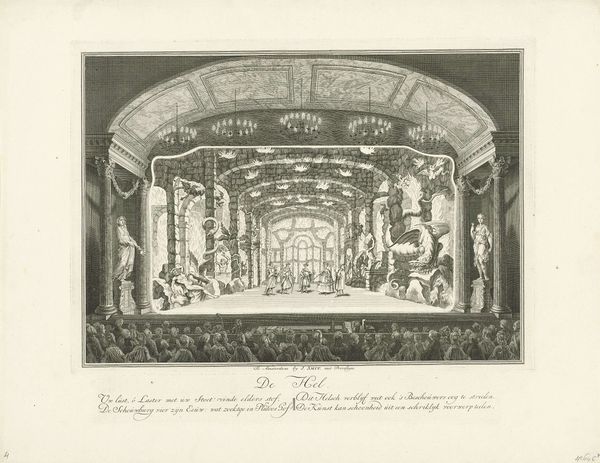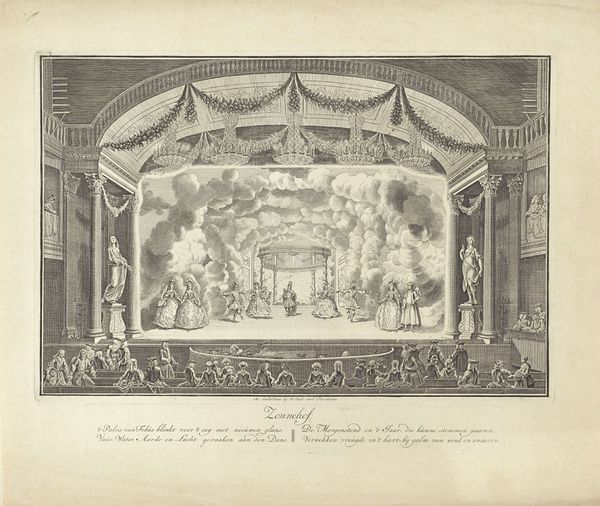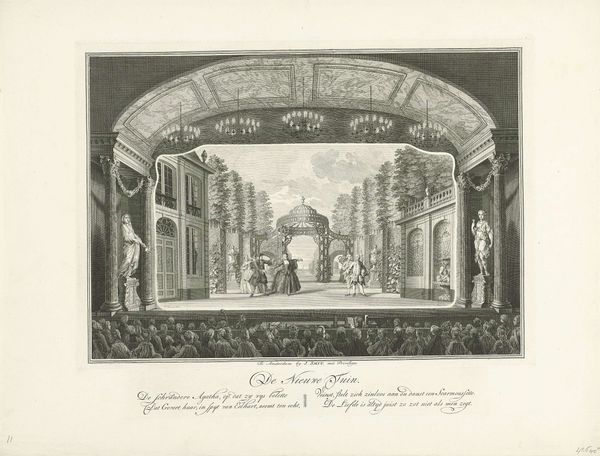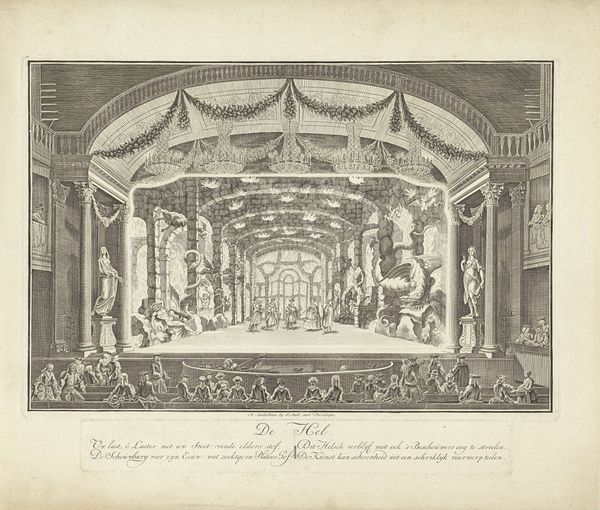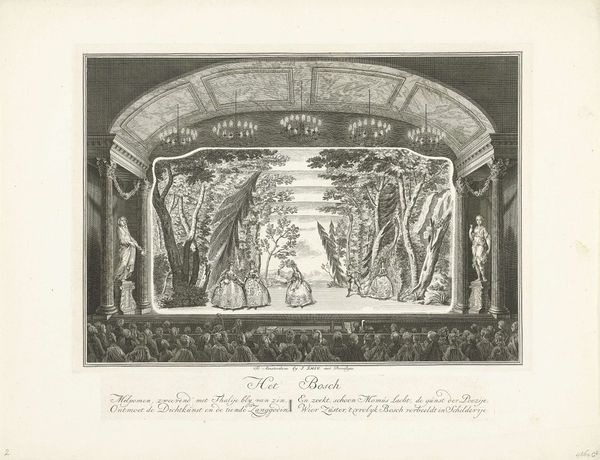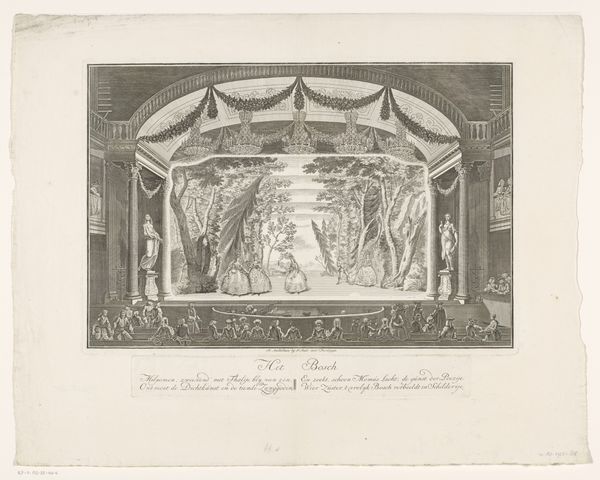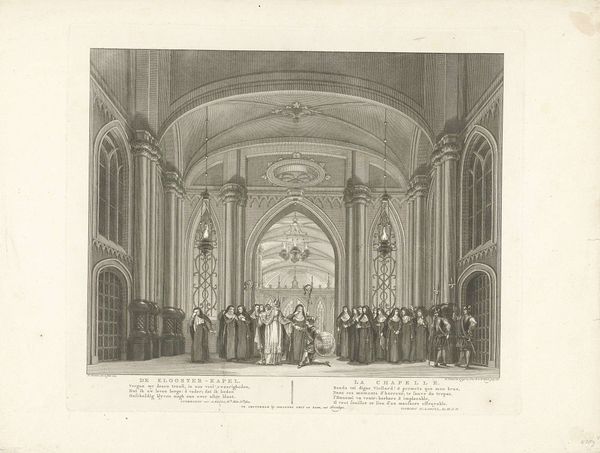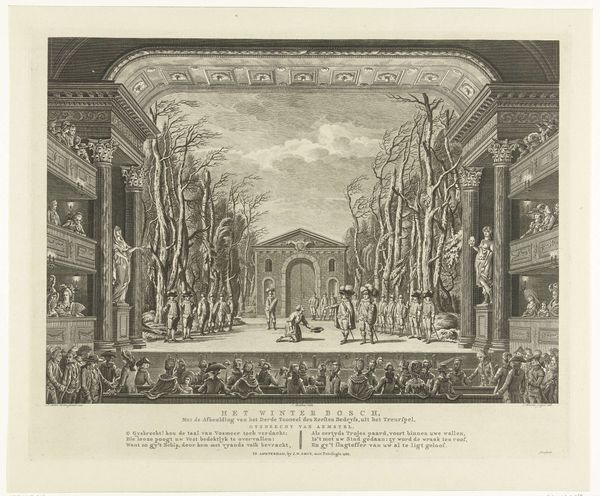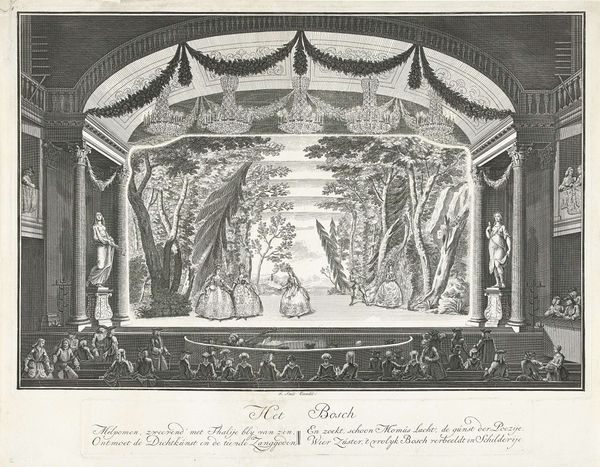
print, engraving
#
baroque
# print
#
old engraving style
#
cityscape
#
history-painting
#
engraving
Dimensions: height 420 mm, width 538 mm
Copyright: Rijks Museum: Open Domain
Editor: This engraving, "Schouwburg met toneeldecor: De Berg van Parnas," likely from between 1738 and 1772, by Jan Punt, depicts a theatrical scene. I find it quite captivating – the detail is incredible, and it really draws you into the illusion of depth. What compositional elements stand out to you in this piece? Curator: What I appreciate most is how Punt orchestrates spatial recession through linear perspective. Note the symmetrical arrangement; the eye is relentlessly drawn to the vanishing point at the center of the stage, reinforced by the converging lines of the architecture and the diminishing figures. Observe the subtle modulation of light and shadow – how it serves to define form and create a sense of volume, even in a two-dimensional medium. Editor: So, the symmetrical composition and the control of light are key here. But isn't symmetry a bit predictable? Curator: Predictability can be a powerful tool, particularly in the Baroque style. In this print, symmetry provides a sense of order and stability. The highly ornate costumes contribute to the balance too, do they not? Also, reflect on the fact that this a print capturing an *actual* theatrical design of that time; what visual order does that reveal? Editor: True. The costumes and architecture do echo each other, creating harmony and guiding the viewer through the layers of the theatre! I hadn't considered the playfulness between stage design and visual form. Curator: Precisely. Thinking about *how* we look, how Punt designed it, helps us explore form's significance in relation to both the physical stage and its intended, performative affect. Editor: This has really shifted how I see this engraving! I now understand it is a construction, not just an image. Thank you! Curator: A fruitful observation, I believe! The work shows a unique attention to line and compositional harmony.
Comments
No comments
Be the first to comment and join the conversation on the ultimate creative platform.
